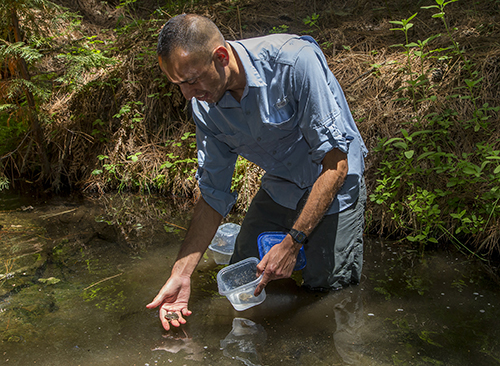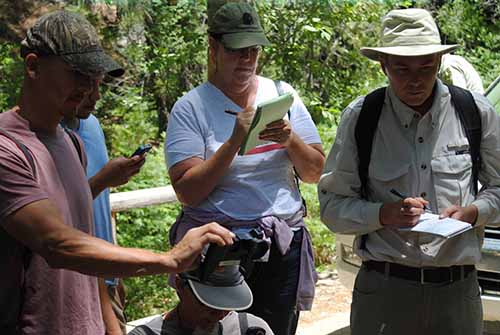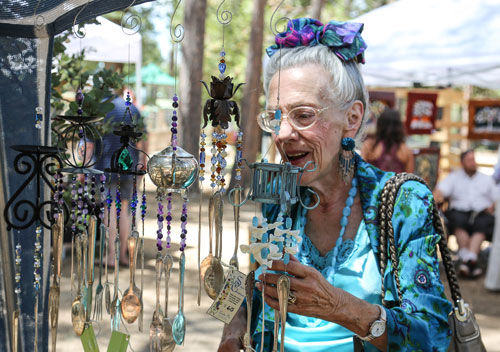
The effort to re-establish the endangered mountain yellow-legged frog in its native habitat took a large step forward last week. On Wednesday and Thursday, about 100 “sub-adult” frogs were released in Indian Creek on the James San Jacinto Mountains Reserve, near Lake Fulmor.

The sub-adults, or froglets, are slightly smaller than a full adult, which measures about 2 inches long. But the lead researchers, Adam Backlin, an ecologist with the U.S. Geological Survey Western Ecological Research Center, and Frank Santana, research coordinator for San Diego Zoo’s Institute for Conservation Research, were optimistic that the adult-stage frogs would have a higher probability of surviving and establishing a new population on the Hill than the tadpoles released in previous years.
“I love this moment,” said Dr. Jennifer Gee, James Reserve director. “We’ve waited so long for the actual release.”
The mountain yellow-legged frog was native to most creeks in the Southern California mountains, according to Backlin. “They were the top predator in their creek habitat,” Backlin said. But when the adults were removed, “the invertebrate aquatic predator population [insects] expanded and may have preyed on the tadpoles before they metamorphosed into adult frogs.”
Until this week, no adult frogs had been observed in the areas where tadpoles had been released. However, Ben Landis, science communicator for the U.S.G.S. Western Ecological Research Center, reported, “The team found two very small mountain yellow-legged frogs in the stream — smaller than the froglets released that day.
“Due to their very small size, the team thinks these two may in fact have been individuals that metamorphosed from tadpoles released by the team in November 2010 (this species is known to grow very slowly). And they may have been attracted to the site when they smelled the new batch of frogs,” he said but stressed that this still has to be confirmed.
This frog species is a good one to re-introduce into native habitat, Backlin explained. “They produce a lot of offspring and will be easier to establish than a mammalian species.”
Of the 100 frogs released last week, more than a quarter will wear radio transmitters so scientists can track their movements within the habitat. While the transmitters’ range is 50 meters, scientists do not anticipate that the frogs move very far from their release points in the creek. The transmitters’ life is about 30 days, so every four weeks these will be replaced with new equipment.
The froglets set free at the James Reserve were raised at the San Diego Zoo Institute for Conservation Research. In addition to the sub-adults, one adult female with transmitter was also released. As adults, the frogs’ life span is about six to eight years.
Scientists believe a fungus on the frog’s skin may have contributed to the calamitous decline in the natural population during the 1990s. Consequently, the frogs released last week were bathed in a bacterial solution to help prevent the possible chytrid fungal infection. The bacteria were found on one of the existing populations on the Hill, according to Santana.
The research team hopes to release more tadpoles later this year. Team members represent a variety of federal, state and local agencies all striving to restore this species to its natural habitat.
In 2002, the U.S. Fish and Wildlife Service listed the mountain yellow-legged frog in Southern California as endangered. By 2003, its population was less than 200. Efforts to boost the species’ population have included captive breeding, reintroducing captive offspring to historic habitat, and scientific research into the causes of the species’ decline.
The James Reserve is part of the University of California’s Natural Reserve System.














